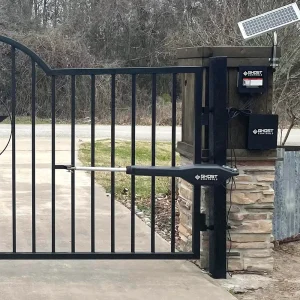Behind the Scenes: How Blockbuster Movies Are Made

The glitz and glamour of blockbuster movies often shine brightly on the big screen, captivating audiences around the world. However, behind the scenes, a massive effort involving many professionals, from directors and actors to technicians and designers, goes into creating these cinematic masterpieces. Making a blockbuster movie is a complex process that involves several phases, including development, pre-production, filming, post-production, and marketing. In this article, we will dive deep into the behind-the-scenes process and uncover how blockbuster movies are made.
The Initial Idea: From Concept to Script
Every blockbuster movie starts with an idea, whether it’s an original concept, an adaptation of a book or comic, or a sequel to a beloved franchise. The journey from idea to screen begins in the development phase, where filmmakers, writers, and producers brainstorm concepts, pitch ideas, and eventually choose a direction for the film. This is the time when a film’s tone, themes, and target audience are defined.
Once the concept is approved, the next step is to develop a screenplay. A screenplay serves as the blueprint for the entire movie, detailing dialogue, scene descriptions, character arcs, and actions. A team of writers may work together to create the script, often undergoing several drafts and revisions before the final version is ready. For blockbuster movies, it’s common to hire experienced screenwriters with a history of successful films or established franchises, such as J.J. Abrams or Christopher Nolan.
Pre-Production: Building the Foundation
Once the script is complete, the project enters pre-production, which is arguably one of the most critical stages of filmmaking. During pre-production, the groundwork for the film is laid, and a lot of planning goes into the logistics of the shoot.
Casting: Finding the Right Talent
One of the most important aspects of pre-production is casting. For blockbuster movies, casting directors often conduct extensive auditions to find the best actors for the roles. Producers and directors may also approach established stars who fit the vision of the characters. Big-budget films often attract major talent, and actors may sign multi-movie contracts for franchises, as seen with stars like Robert Downey Jr. in the Marvel Cinematic Universe.
Once the cast is finalized, rehearsals begin. For action-oriented blockbusters, this may involve fight training, stunt work, and specialized coaching for the actors, ensuring they’re physically prepared for their roles.
Location Scouting and Set Design
For large-scale movies, location scouting is another essential aspect of pre-production. Filmmakers may choose to shoot on location, utilizing real-world settings to capture authentic landscapes, or they may construct elaborate sets in studios or warehouses. Iconic movies like The Lord of the Rings used stunning locations across New Zealand, while others, like Star Wars: The Force Awakens, used both physical sets and digital backgrounds to create imaginary worlds.
The production designer is responsible for designing sets and ensuring they match the visual tone of the script. This involves working closely with the director, the director of photography (DP), and other crew members to create environments that support the story’s themes, mood, and characters. For example, the iconic set of the Titanic in James Cameron’s 1997 film was meticulously built to replicate the grandeur of the real ship.
Costume Design and Makeup
For blockbusters, costume designers and makeup artists play a critical role in creating the look of the characters. From the armored suits in Iron Man to the alien makeup in Avatar, the attention to detail in the costumes and makeup helps to bring the characters to life. The costume designer collaborates with the director to ensure the outfits reflect the characters’ personalities and the movie’s world. For fantasy or science-fiction films, this process may also involve creating prosthetics, special effects makeup, or digital augmentation.
The Filming Process: Lights, Camera, Action!
The filming stage is when the magic of filmmaking starts to take shape. This is where everything that’s been planned in pre-production comes together, and the director guides the actors and crew through the shooting schedule. Blockbuster movies typically have long production timelines due to the complex nature of the shoots, which can involve multiple locations, special effects, and stunts.
Cinematography and Camera Work
The director of photography (DP) or cinematographer is responsible for capturing the visuals of the film. This includes choosing the right cameras, lenses, and lighting setups to create the desired look. The DP also works closely with the director to establish the visual tone of the movie, ensuring that every frame tells part of the story. For blockbuster films, this often involves cutting-edge camera technology, including IMAX and 3D filming, to provide a more immersive experience for the audience.
Blockbuster films often use drone shots and CGI integration to capture breathtaking visuals that wouldn’t be possible with traditional filmmaking techniques. For example, movies like Avatar and Avengers: Endgame pushed the boundaries of what is possible with technology.
Stunts and Special Effects
Many blockbuster movies rely heavily on action scenes involving stunts. These stunts are typically performed by professional stuntmen or the actors themselves, with extensive safety measures in place. The stunt coordinator works with the director to choreograph fight scenes, car chases, and other action sequences. Some of the most iconic stunts in cinema history, like the car chases in Mad Max: Fury Road or the gravity-defying stunts in the Mission: Impossible series, are the result of meticulous planning and execution.
Additionally, special effects (SFX) play a crucial role in bringing blockbuster films to life. Practical effects, such as explosions and animatronics, are often combined with computer-generated imagery (CGI) to create realistic creatures, environments, or fantastical elements. This process is typically done by a team of VFX artists who use software like Autodesk Maya or Adobe After Effects to design digital elements that seamlessly blend with live-action footage.
Post-Production: Adding the Finishing Touches
Once filming is complete, the film moves into post-production. This stage involves editing, sound design, visual effects, and more, to ensure the final product is ready for theaters. The post-production phase is often just as lengthy and labor-intensive as the actual filming process, especially for blockbusters with extensive special effects.
Editing and Assembly
The editor works with the director to assemble the footage into a cohesive story. This includes cutting down scenes, adjusting pacing, and ensuring that the film flows smoothly from start to finish. Blockbuster films can have hundreds of hours of footage, and it’s the editor’s job to create a finished product that tells the story effectively.
Sometimes, directors work with second-unit directors who handle specific shots (e.g., action scenes or aerial shots), leaving the primary director to focus on the performances and emotional aspects of the story. The process also includes color grading, which gives the film its final visual tone, often using computer software to enhance the lighting and colors.
Sound Design and Music
The sound designer adds sound effects, including background noise, dialogue, foley (reproduction of everyday sound effects), and anything that supports the soundscape of the film. In blockbuster movies, sound design is crucial for building immersion, particularly in genres like action, sci-fi, and fantasy.
In parallel, the composer works to create a musical score that underscores the emotions of the film. Iconic blockbuster scores, like John Williams’ music for Star Wars or Hans Zimmer’s work on Inception, are integral to the film’s overall experience. Music helps elevate key moments, creating excitement, tension, or sadness, depending on the scene.
Visual Effects Integration
For blockbuster movies, visual effects (VFX) often take up a significant portion of post-production time. This is especially true for fantasy, sci-fi, and superhero films. VFX artists work tirelessly to blend digital elements with live-action shots. This can range from animating a CGI dragon in Game of Thrones to designing intricate digital worlds like in Avatar.
Post-production VFX work is done using complex software like Adobe After Effects, Nuke, and Fusion. These effects are finely tuned to ensure they look as realistic as possible, despite the fantastical nature of the scenes.
Marketing and Distribution: Reaching the Audience
Once the film is completed, the next step is marketing and distribution. Blockbuster movies typically have massive marketing campaigns, with trailers, posters, TV spots, and interviews driving anticipation before release. The studio works with distributors to decide on the best release strategy, whether that’s a global theatrical launch, limited screenings, or simultaneous release on streaming platforms.
For large-scale movies, premieres are held in major cities, often attended by the stars and filmmakers. These events attract media attention, generating buzz in the lead-up to the movie’s official release. Social media also plays a massive role in the marketing efforts, with hashtags, viral campaigns, and fan engagement helping to build excitement.
Conclusion
Creating a blockbuster movie is a massive, intricate process that involves many skilled professionals working together to bring a director’s vision to life. From developing a compelling script to building elaborate sets, coordinating complex stunts, and adding stunning special effects, the making of a blockbuster is a feat of collaboration and creativity. The magic behind these films lies not just in their spectacle, but in the months and years of hard work put in by an entire team of artists, technicians, and dreamers.



